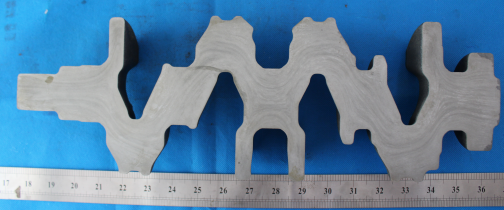

Forging streamline is also known as flow pattern. During forging, brittle impurities of metal are broken and distributed in broken or chain shape along the main elongation direction of metal; plastic impurities are distributed in strip shape along the main elongation direction along with metal deformation, so the metal structure after hot forging has certain directionality. The distribution of flow line can be optimized according to the improvement of forging process. Good flow line can improve the mechanical properties of forgings. On the contrary, if there are major defects in the flow line, such as disordered flow through the metal flow line, the mechanical properties of forgings will be affected. The forging flow line makes the metal performance show the anisotropy; the tensile strength along the flow line direction (longitudinal) is higher, while the tensile strength perpendicular to the flow line direction (transverse) is lower. If we can make use of the characteristics of high longitudinal strength of streamline structure in the production, make the streamline structure in the forging continuously distributed and consistent with its tensile direction, it will significantly improve the bearing capacity of parts. For example, when the hook is formed by bending process, the streamline direction can be consistent with the stress direction of the hook, so as to improve the ability of the hook to bear the tensile load. In the forged crankshaft, the distribution of streamline is reasonable; if the screw is made directly by cutting with bar stock, the quality of the screw is not good and the service life is low; but the screw is made by local upsetting, the quality is good and the service life is long. For example, the crankshaft adopts the full streamline forging method, which makes the streamline continuously distributed along the shape of the crankshaft, improves the service life and reduces the material consumption.